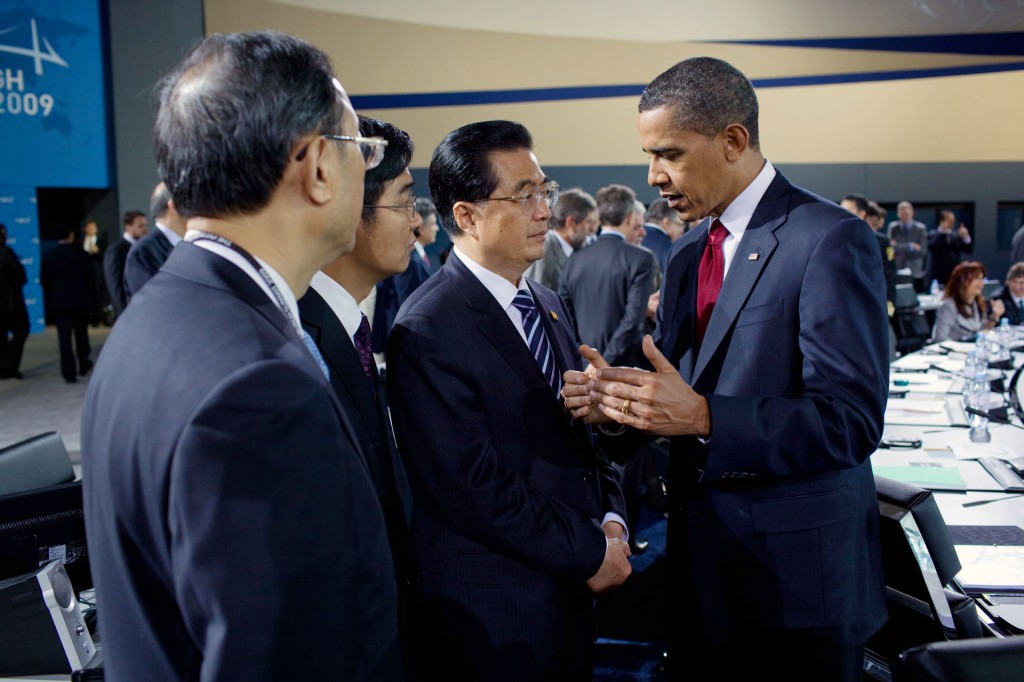I was fortunate to join colleagues from Harvard, but as well from other US academic institutions – and colleagues from China as well – in a fascinating discussion here at the Kennedy School over this past weekend. The workshop was filled with great US China specialists of all stripes – Susan Shirk from UCSD, Tony Saich and Iain Johnston from Harvard as well as a number of IR theorists including Etel Solingen UC Irvine, John Mueller from Ohio State, John Mearsheimer from Chicago and Stephen Walt from Harvard. The session was organized by my old mentor Dick Rosecrance – lately of Harvard and the Belfer Center there but also Graham Allison and Joesph Nye former Kennedy deans, Ezra Vogel a China-Japan scholar who has gained a recent note of fame for his just released book on Deng Xiaoping and a host of economists, ‘guns and rocket’ folks and IR types.
As my wife always argues these kinds of meetings, are as she says “just an excuse to schmooze with old friends.” “Yes, I say, and what’s wrong with that.” But the weekend workshop had a more serious objective. The workshop was titled, “Chinese Strategy and the US Response: How Far is Adjustment Possible?” This is the first of several sessions possibly looking at how the US and China can survive the power transition – that is the rise of China and relatively speaking, the decline of the United States – likely exhibiting competition and rivalry, but avoiding outright conflict.
Inevitably there was much circumlocution – arguing around the point, near the point but not quite on the point. But over the day and half the group did make progress in sketching out a scenario or framework for this relationship – though we are not so far along so to be able to elaborate the behaviors and structures that would guarantee a successful power transition between these most crucial great powers.
The discussions were very rich and stretched over a wide variety of issues from the territorial, to the economic and political, the strategic and the military. Let me just draw out a few choice items.
My good friend Arthur Stein, and a long established presence at UCLA, probably had the best insight – this toward the end of the workshop – that of framing the relationship as a ‘couple’. Thus, there is an existent ongoing relationship but one that must be managed. Dick Rosecrance picked up on this framing at the end to suggest that the US-China relationship is like a ‘common law couple’ – not formally married but in a relationship nonetheless. What is critical in describing the relationship this way is to establish that there is a preexisting relationship that must be worked on. And in that reference frame there was a reminder that to be successful it was important to act to adapt yourself to your spouse rather than to try and change your spouse. The basic need for both – avoid stupidity, manage the relationship and avoid divorce.
Well I suspect these views reflect words of wisdom for marital relations. But we will see if it holds for the US-China relationship and what structures and behaviors it suggests for IR as opposed to marital counseling. But as a starting point – not bad.
But there was more. Our friendly ‘guns and rocket’ types including Bob Ross from BC and the Fairbanks Center at Harvard, Taylor Fravel and and Barry Posen from MIT, gave us a perspective in the regional competition and the military modernization and build up that in the end – given geography and capability – leads to both being able to box the other in and giving advantage to the defense over the offense. Now the likely advantage of the defensive suggests at first glance that these powers would be better off where they restrain spending and offensive deployment.
Joe Nye insightfully and quite pointedly argued that it would be quite wrong for the United States to frame the US reassertion of its regional East Asian presence with a cold war containment in mind. He urged that the US maintain its ‘engagement but hedging strategy’ – the hedging being the US reaffirmation of its bilateral Japan strategy. Containment of China it was suggested could only be provided by China. In other words, ‘China will contain China’. And finally and in the circumstance that China fails to contain China over the coming years then ‘pinpoint balancing’ from various states – not a broad and threatening coalition – would suffice to do the trick in the circumstances.
The prime effort – by China but also the United States – as the years of the power transformation tick by – is to find the leadership capacity and will – the means and structures – to reconcile to the other. Let’s hope this is not too tall an order.


